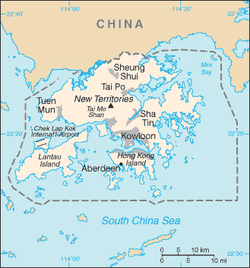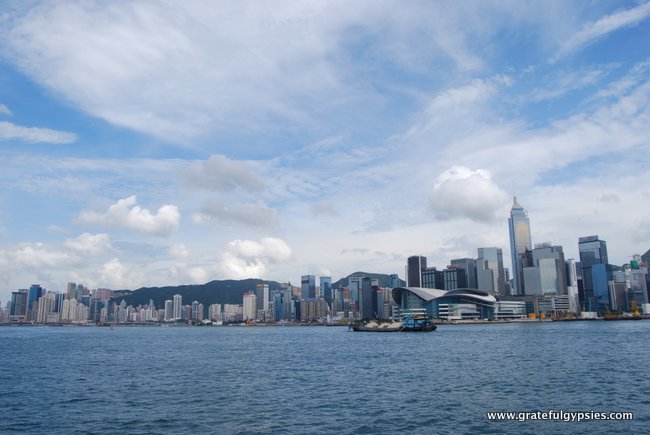Better Know a… SAR (Hong Kong) Posted by sasha on Sep 3, 2014 in Culture
In the last edition of the “Better Know a…” series here, we visited Shanxi province up in the north of China. Since there’s going to be a ton of new stuff on the blog this fall about the south given my recent Hong Kong to Kunming overland trip, I figured now is as good a time as any to introduce the SARs (Special Administrative Regions) of China. First up is one of the most famous places in Asia – Hong Kong (香港 – xiāng gǎng).
History

Check out the HK History Museum for a good lesson.
People have called Hong Kong home for around 30,000 years based on archaeological findings. Eventually, it became a thriving fishing and farming community. The area was first incorporated into China during the Qin Dynasty, when the country was united under the first emperor Qin Shihuang. Clans built walled villages to protect against bandits and pirates. Other families lived a floating lifestyle, living on boats and relying on fishing.
When it comes to modern Hong Kong history, the Opium Wars come to mind. The British had come to begin trading opium with China to counteract the trade imbalance that had resulted from lots of imported Chinese tea. A war was started due to China’s opposition to the opium trade, and the Brit’s victory led to the ceding of Hong Kong. The area remained a British colony up until 1997, with the exception of the four-year Japanese occupation during World War II. After the Japanese defeat, the UK remained in control of Hong Kong with a few slight changes. Over the coming decades, Hong Kong transformed into a huge manufacturing center and then an international financial center.
On July 1, 1997, Hong Kong was returned to China under a “one country, two systems” policy that would grant the former colony a high degree of autonomy for 50 years. Citizens of Hong Kong enjoy greater freedom of speech and assembly than their mainland counterparts (who get basically none for the record), but it seems as if Beijing is content on laying down the hammer with recent statements about 2017 elections.
https://www.youtube.com/watch?v=Kk6gfAtwZ7Q
The Hong Kong Story
Geography

HK on the map
Located way down on China’s southern coast, HK is composed of three main areas – Hong Kong island, Kowloon, and the New Territories. Then there are the 200-some offshore islands that are also counted as HK, the largest being Lantau island. Facing the South China Sea at the mouth of the Pearl River Delta, Hong Kong is surrounded by water on three sides and it shares a land border with Shenzhen in the north. Some might be surprised to find out that only about 25% of the landmass of HK is developed, while a lot of the land is reserved as country parks and nature reserves. Most of the land is hilly or mountainous and there are plenty of high peaks here, the largest being Tai Mo Shan at 957 meters (3,140 ft) above sea level.
Climate

A nice, hot day in the HK summer.
Hong Kong has what is considered a humid subtropical climate with four seasons. Winter is between November and February, and it is generally cool and dry. Sunny skies morph into lots of clouds as winter progresses, and low temperatures do occur from time to time. In the spring, things warm up and get really humid. March and April are also the cloudiest times of the year, so don’t go expecting lots of sunshine. Summer is hot and humid with lots of rain, and this is the time when typhoons are most likely to hit. Flooding and landslides are a danger in case they do hit. Many find autumn to be the most enjoyable season in HK, as it stays nice and warm but the humidity and rainfall start to dissipate. Late October to early December is probably the best time to visit Hong Kong weather-wise.
Population
With a population of over 7 million and not a whole lot of developed land, Hong Kong is one of the most densely populated places on Earth – there are over 6,000 people per square kilometer. Nearly 94% of people here are of Chinese descent, mostly originating from bordering Guangdong province. Foreign domestic helpers, mostly from Indonesia and the Philippines, make up about 4% of the population. You’ll find people from all over the world here, as it is a very popular place to work and there are many international companies.
Culture

Dim sum – a huge part of Hong Kong culturel
As a former British colony, Hong Kong is a classic example of east meets west. When one thinks of Hong Kong culture, the first word that comes to mind is most likely “Cantonese.” This can describe the people, language, and food of HK. As for the language, Cantonese (广东话 – guǎng dōng huà) originates from neighboring Guangdong province (formally known as Canton). While the same characters are used in writing, Hong Kong uses traditional characters while the simplified versions are used on the mainland. If you thought Mandarin’s four tones were tricky, try Cantonese’s six! Although HK enjoys a high level of religious freedom, a majority of its people claim no religion at all. When it comes to food, Cantonese cuisine is one of the most famous not only in China, but around the world. Dim sum, roast goose, and lots of other tasty delicacies are big here.
https://www.youtube.com/watch?v=XBK2AjBzoe8
An intro to Cantonese food.
After 150 years of colonial rule, Japanese occupation, and a return to China, Hong Kong has a very unique culture. The pop culture of Hong Kong is huge, from catchy Cantopop to a thriving TV and film industry. Take a walk along the Avenue of Stars and see the Asian Hollywood, featuring famous actors like Jackie Chan and Bruce Lee. Hong Kong may live under the banner of “one country, two systems,” but everything about it is quite different from the mainland.

Walking along the Avenue of Stars.
Hong Kongers discuss their identity with CNN.
Famous Places
Hong Kong itself is a famous place – a name known all across the world. Tourists flock here in the thousands to take in the sights, hit the mega-malls, and taste the delicious cuisine. The most iconic image of Hong Kong is certainly the skyline of the massive skyscrapers across the Victoria Harbor as viewed from Kowloon. People gather here every night for the Symphony of Lights, where the huge buildings are illuminated in colorful lights accompanied by music.
Another popular place to visit is Victoria Peak, which provides the best view of Hong Kong. Take the old tram up here just before sunset to see the lights come on on all of the massive buildings.

View from atop “The Peak.”
Many visitors to Hong Kong will also jet over to Lantau island for a day or two. There, you can find beaches, a huge sitting Buddha, and even Disney Land.

Big sitting Buddha on Lantau.
HK featured on Discovery’s “Waterfont Cities of the World.”
Hong Kong is a fascinating place to visit, and it works great as a spot to either begin or end a China trip. Plus, flights come in and out of HK from just about anywhere in the world, so it’s one of the most accessible places to visit in Asia. Check the blog in the months to come for a few more posts and videos about the “Pearl of the Orient.”

Build vocabulary, practice pronunciation, and more with Transparent Language Online. Available anytime, anywhere, on any device.
About the Author: sasha
Sasha is an English teacher, writer, photographer, and videographer from the great state of Michigan. Upon graduating from Michigan State University, he moved to China and spent 5+ years living, working, studying, and traveling there. He also studied Indonesian Language & Culture in Bali for a year. He and his wife run the travel blog Grateful Gypsies, and they're currently trying the digital nomad lifestyle across Latin America.




Leave a comment: